Can you handle the heat? You better be able to if you want to grow these spicy peppers in your garden!
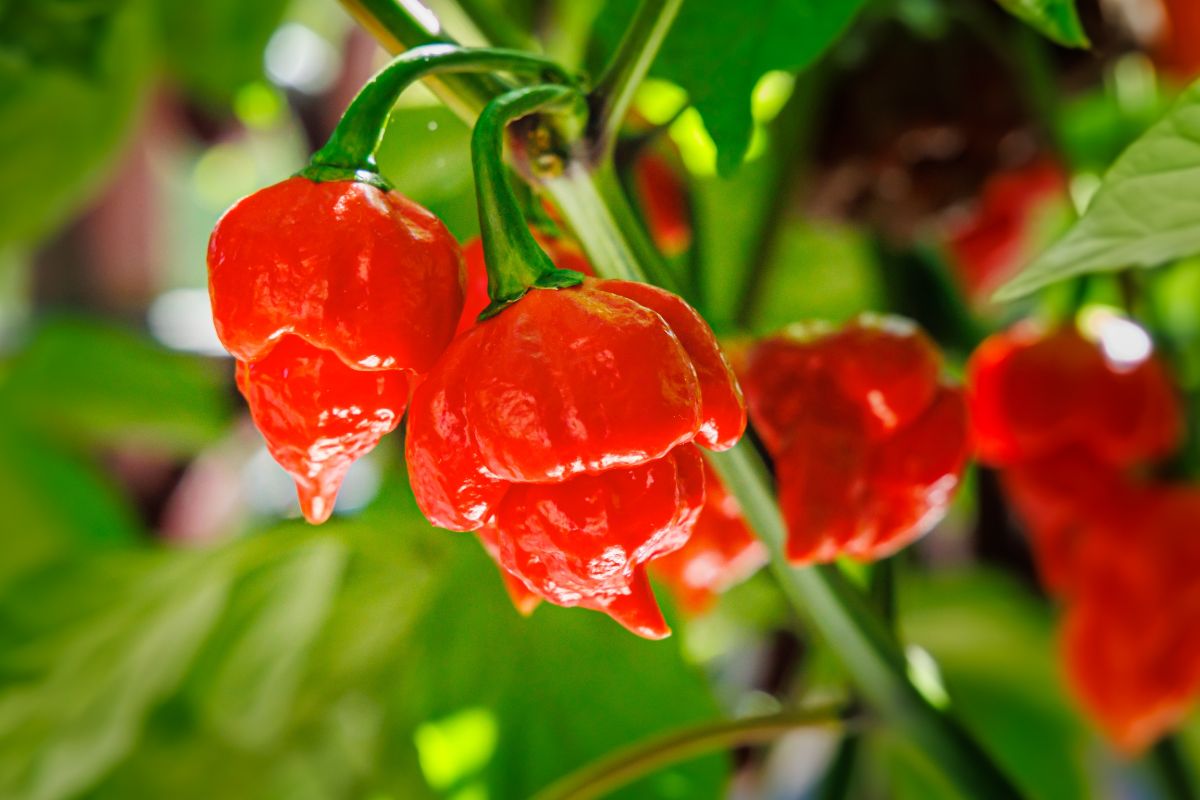
When most people think of hot peppers, they think about jalapenos and cayennes. But on the Scoville scale (the scale used to classify a pepper’s spice factor), both jalapenos and cayennes are ranked as mere “medium” heat chilis. But, if there are extra hot and super-hot peppers out there, how hot do peppers really get?
In this article we’ll highlight some of the spiciest peppers around. From the extreme heat of the Komodo Dragon pepper all the way to the humble jalapeno, we’ve got hot peppers of every degree.
So, if you’re craving the heat, try growing the peppers below. And don’t say we didn’t warn you. They are hot!
Jump to:
- 20 spicy hot peppers to grow in your garden
- 1. Komodo Dragon Pepper (1,400,000 to 2,200,000 Scoville Heat Units)
- 2. Carolina Reaper (1,400,000 to 2,200,000 Scoville Heat Units)
- 3. Trinidad Scorpion Chocolate Pepper (1,200,000 to 2,000,000 Scoville Heat Units)
- 4. Ghost Pepper (850,000 to 1,000,000 Scoville Heat Units)
- 5. Chocolate Habanero (425,000 to 575,000 Scoville Heat Units)
- 6. Habanero Hot Pepper (100,000 to 350,000 Scoville Heat Units)
- 7. Scotch Bonnet Pepper (100,000 to 350,000 Scoville Heat Units)
- 8. Peri-Peri Pepper (50,000 to 100,000 Scoville Heat Units)
- 9. Thai Hot Pepper (50,000 to 100,000 Scoville Heat Units)
- 10. Malagueta Pepper (50,000 to 100,000 Scoville Heat Units)
- 11. Tabasco Pepper (30,000 to 50,000 Scoville Heat Units)
- 12. Cayenne Pepper (30,000 to 50,000 Scoville Heat Units)
- 13. Aji Amarillo (30,000 to 50,000 Scoville Heat Units)
- 14. Lemon Drop Pepper (15,000 to 30,000 Scoville Heat Units)
- 15. Chile de Arbol (15,000 to 30,000 Scoville Heat Units)
- 16. Serrano pepper (10,000 to 23,000 Scoville Heat Units)
- 17. Aleppo Pepper (10,000 Scoville Heat Units)
- 18. Bulgarian Carrot Pepper (5,000 to 30,000 Scoville Heat Units)
- 19. Hungarian Wax Pepper (5,000 to 10,000 Scoville Heat Units)
- 20. Jalapeno Pepper (2,500 to 8,000 Scoville Heat Units)
- Frequently asked questions
- Summary
20 spicy hot peppers to grow in your garden
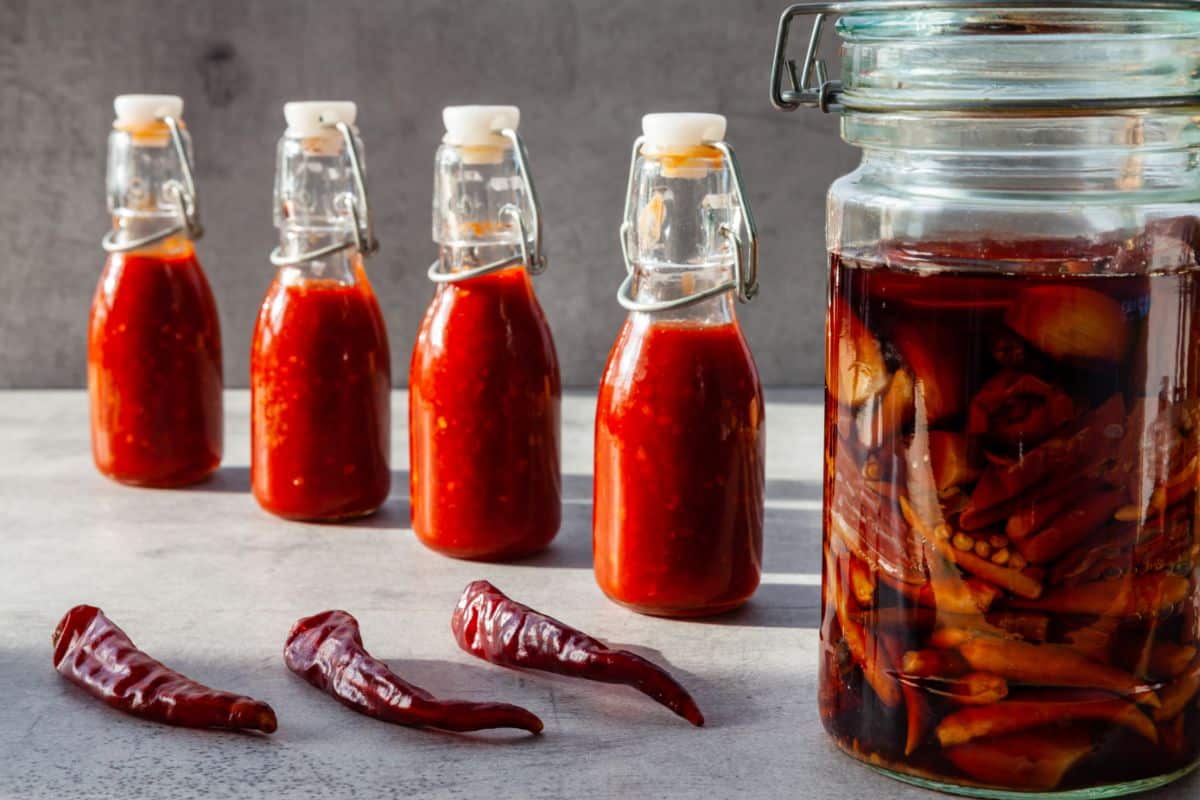
Want to feel the burn? In the list below, we’ve selected some of the best hot peppers to grow for homemade fermented hot sauces, salsas or chili powder blends. Just remember to wear gloves if you want to cook with them!
1. Komodo Dragon Pepper (1,400,000 to 2,200,000 Scoville Heat Units)
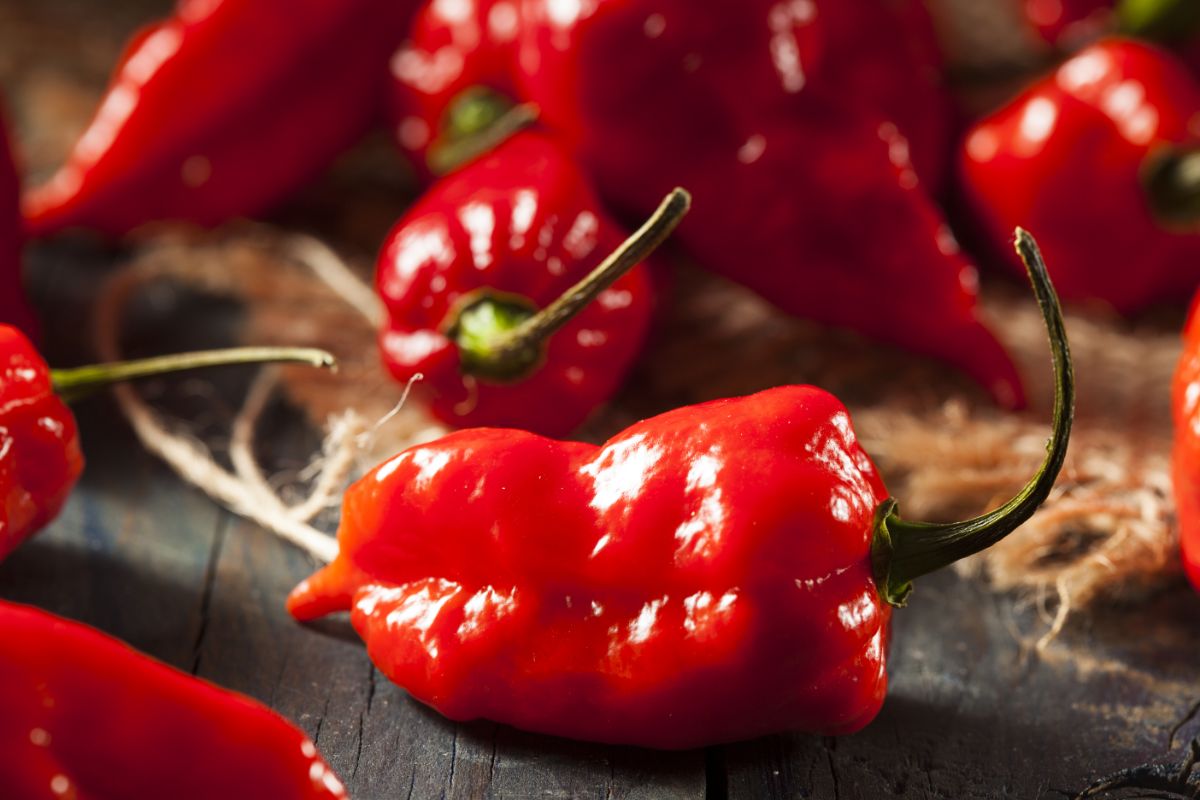
One of the hottest peppers in the world, the appropriately named “Komodo Dragon” pepper is for extreme eaters only.
Like many other super-hot peppers, Komodo Dragon has a heat that builds. When you first bite into it, expect a fruity flavor. But don’t be fooled – the heat gets extreme fast, and it lasts and lasts.
A slender pepper, Komodo Dragon fruit grows to about 2” in length and turns red when fully mature. The more color that develops, the hotter your pepper will be!
2. Carolina Reaper (1,400,000 to 2,200,000 Scoville Heat Units)
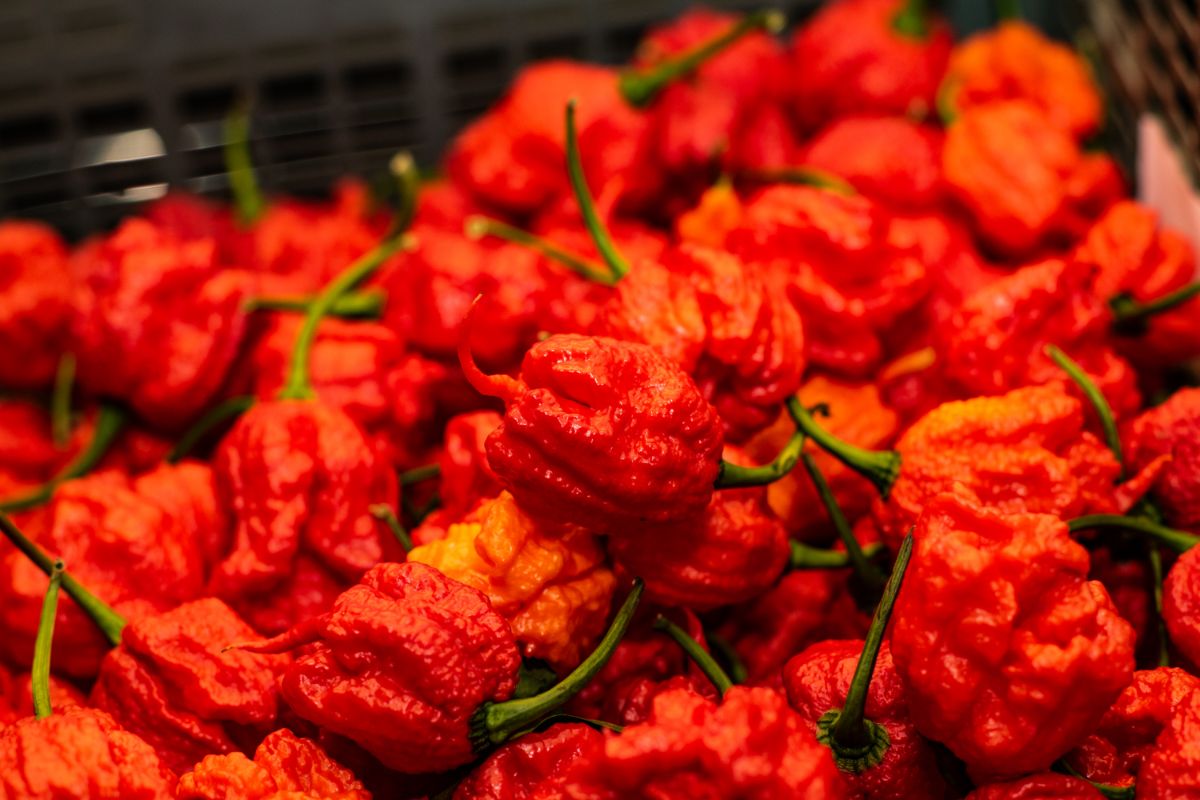
Currently rated the “hottest pepper in the world,” Carolina reapers are a whopping 175 times as hot as a jalapeno. The fiery heat is no joke and is not for the casual eater. But if you can handle it, expect a heat that builds and builds and doesn’t relent quickly!
Carolina reapers were first developed in the United States by crossing red habaneros with Naja Viper peppers. The result is a super-hot pepper that has a touch of sweetness when added into hot sauces. Once mature, reapers reach about 2” length and have a recognizable puckered and textured skin with a pointed tip known, as its “stinger” tail.
3. Trinidad Scorpion Chocolate Pepper (1,200,000 to 2,000,000 Scoville Heat Units)

While they’re technically less intense than the reaper, Trinidad Scorpions still create a serious heat. Another super-hot with a burn that lasts, these peppers also offer a smoky, earthy quality to hot sauces and salsas, if you don’t mind that quintessential scorpion “sting.”
Although there are different Trinidad Scorpions available, the chocolate variety has a beautiful, deep brown skin. Skin of mature peppers is textured and folded and the fruit measures in at about 1 to 2” long.
4. Ghost Pepper (850,000 to 1,000,000 Scoville Heat Units)
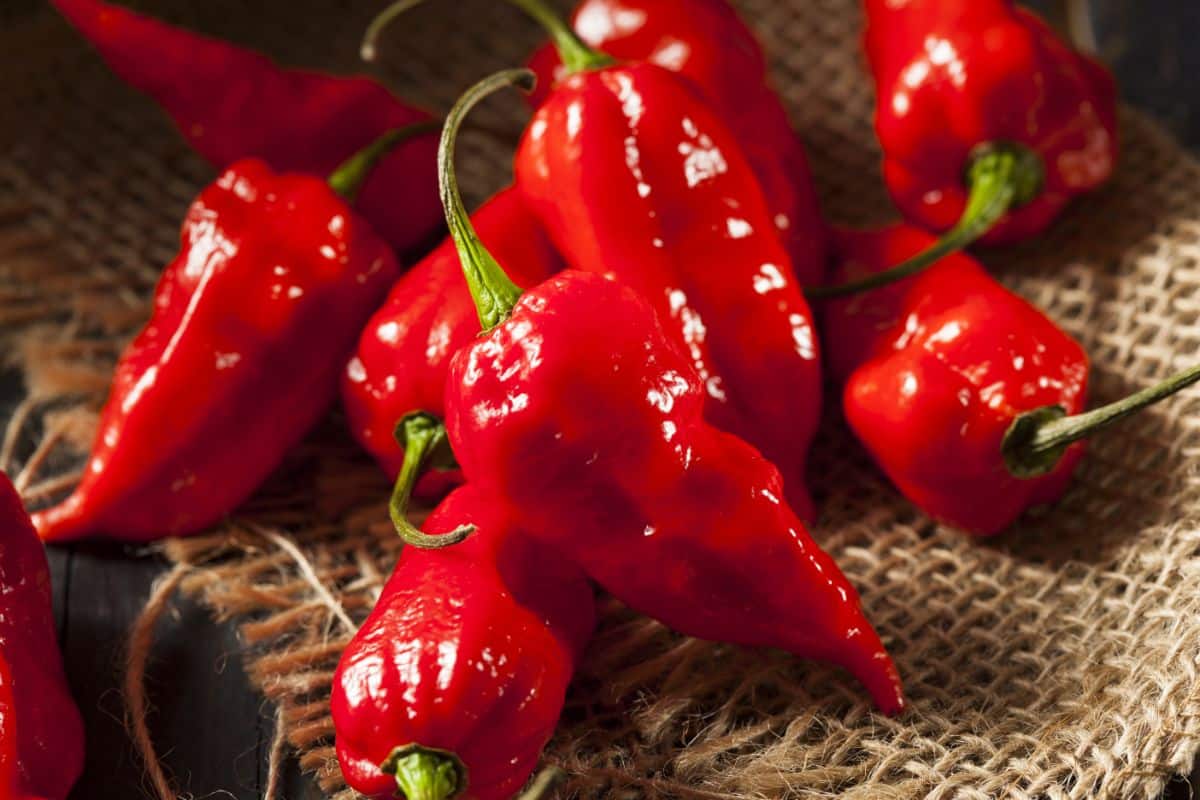
Also known as Bhut Jolokia, the ghost pepper is another super-hot that once was rated the hottest pepper in the world, according to the Guinness Book of World Records. While its title has since been stolen by the infamous Carolina Reaper, you still don’t want to mess around with ghost peppers.
Originally from India, ghost peppers’ heat starts off at the first bite with a fiery burn. The spice then lingers for up to 30 minutes, so if you take a bite, make sure you have a glass of milk nearby! Ghost peppers look a lot like Carolina reapers, with similarly textured skin and fruit measuring in at between 2 to 3” in length.
5. Chocolate Habanero (425,000 to 575,000 Scoville Heat Units)
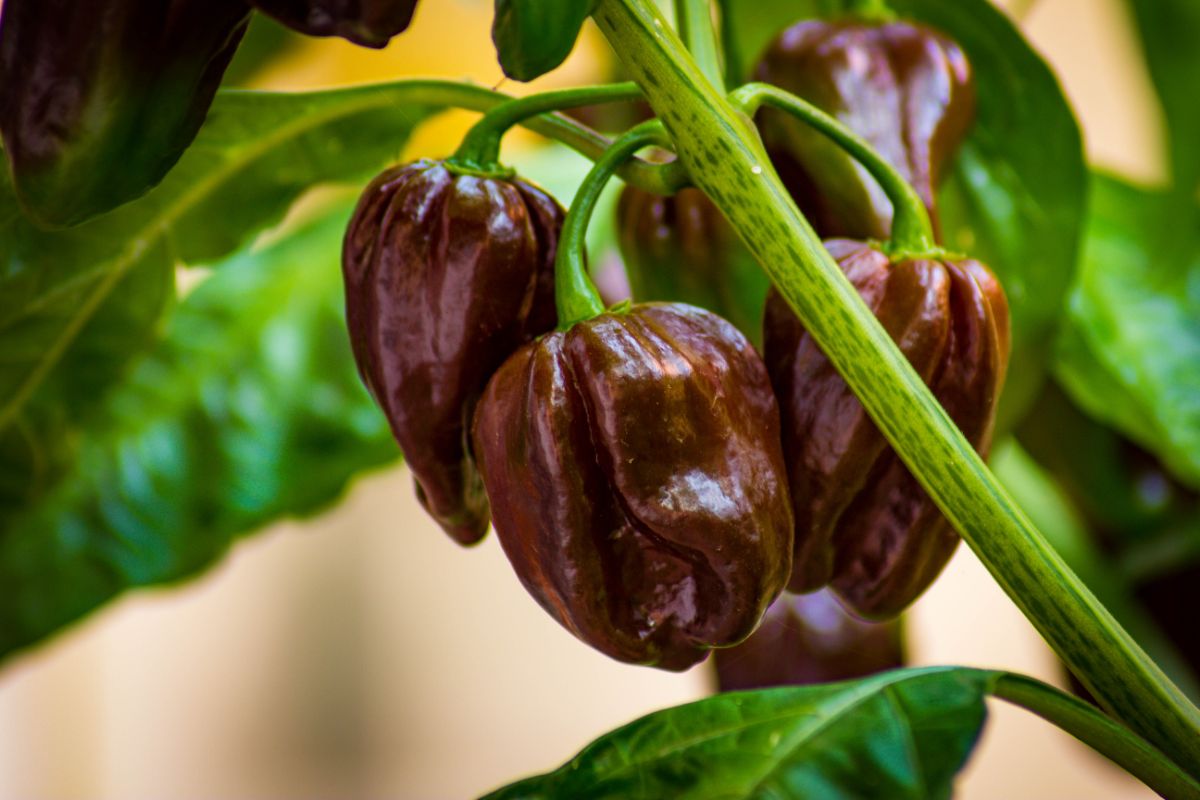
Habaneros are a popular type of hot pepper, but chocolate habaneros are an even spicier cultivar that are about 4 times as hot as a standard habanero.
Like standard habaneros, chocolates have a bright, sweetness under all that heat, but the chocolate variety has an earthy, smoky quality too. This makes them a wonderful choice for fiery moles and other homemade sauces. These super-hot peppers are ready to harvest when the fruit is about 2” long and has developed a rich, warm brown color.
6. Habanero Hot Pepper (100,000 to 350,000 Scoville Heat Units)
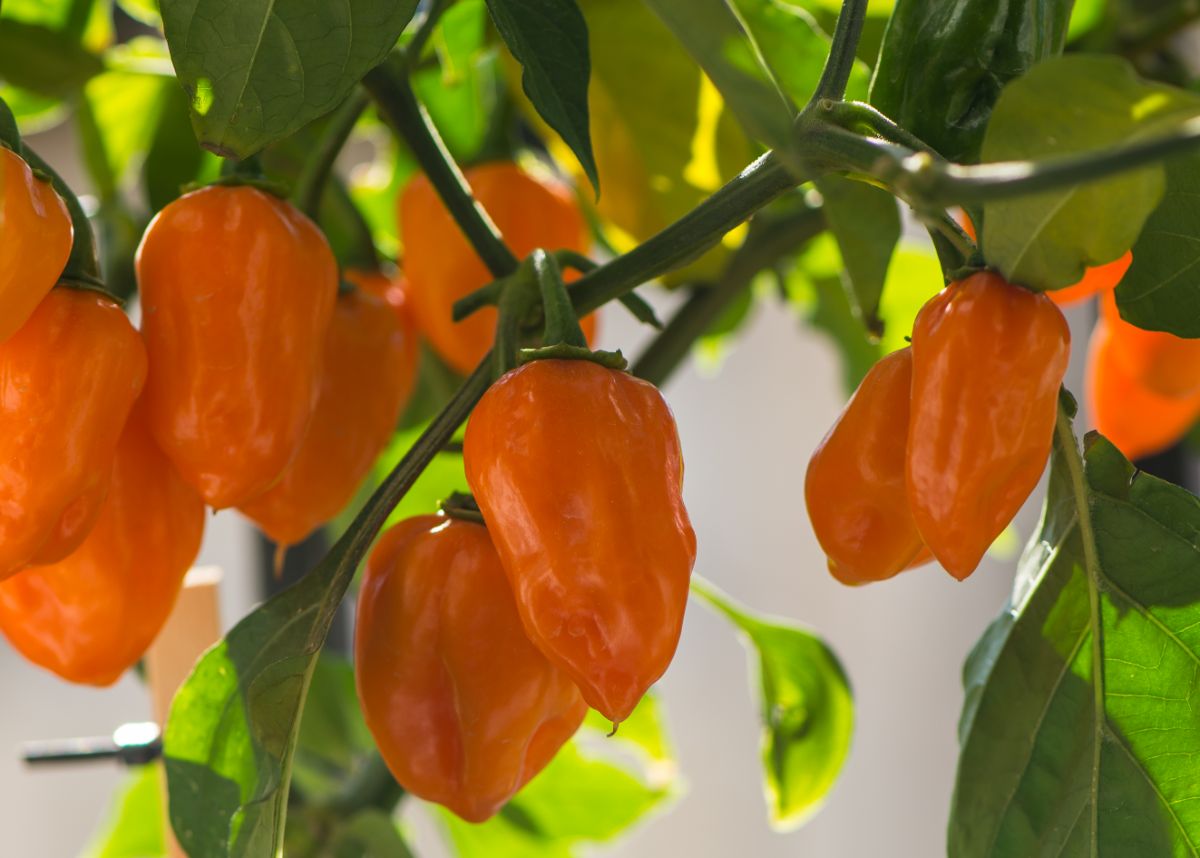
Habaneros are a classic extra hot chili pepper with a bit of a history. Originally from South and Central America, a cultivated habanero was found in Mexico in an archaeological dig dating back to over 6,000 years B.C.E. More recently, habaneros held the title of “hottest peppers in the world” until they were booted from the throne by more modern chili varieties.
Habaneros are hot, but they are also sweet, with a distinct citrus flavor. This makes them fine additions to hot sauces, rubs and powders. Mature fruit develops its characteristic bright orange color and plants tend to produce prolific harvests too.
7. Scotch Bonnet Pepper (100,000 to 350,000 Scoville Heat Units)
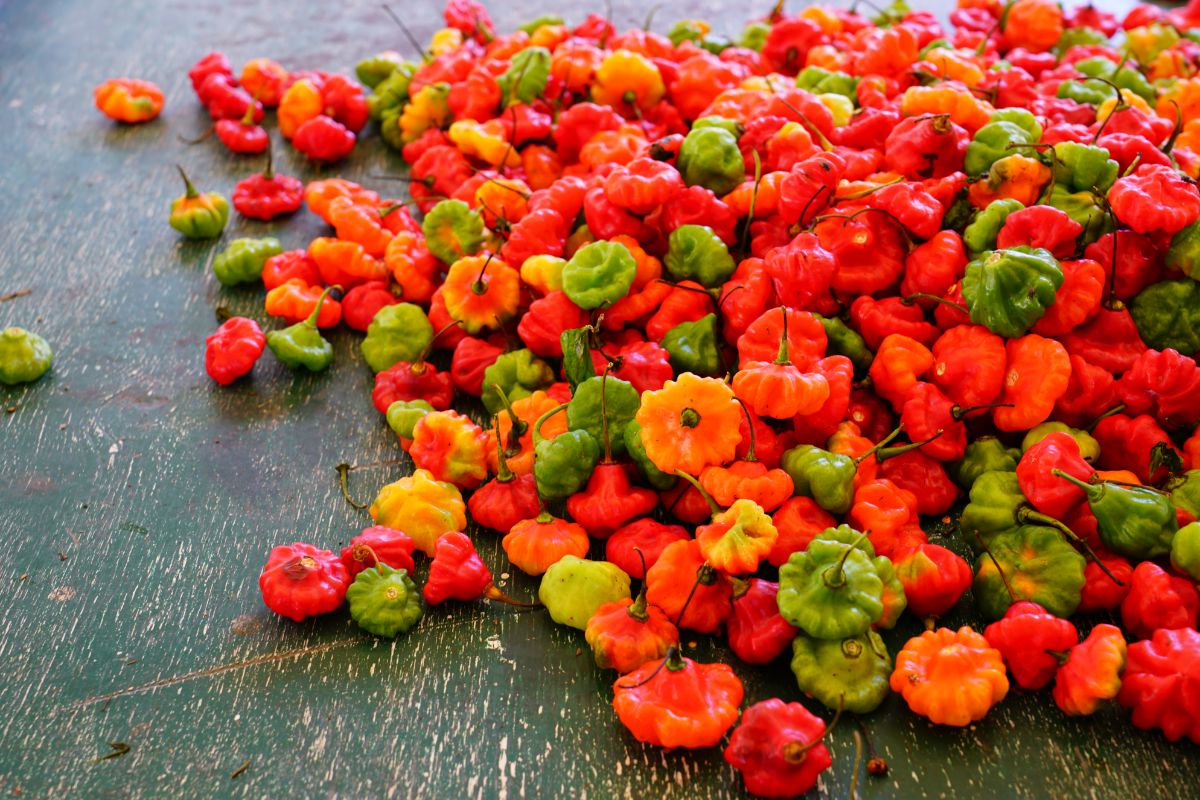
If you’ve ever tasted a habanero, you know what to expect from a Scotch bonnet. These two pepper types have similar spice ranges, but Scotch bonnets have a slightly fruitier and sweeter quality.
A staple in Caribbean cuisine, Scotch bonnets are used in jerk seasoning blends and their fruity flavor pairs nicely with other tropical tastes. These extra hot peppers are named for their characteristic shape that is said to resemble a traditional Scotsman’s cap, known as a Tam O’Shanter. Peppers are small and lobed, measuring in at around 1 ½” long.
8. Peri-Peri Pepper (50,000 to 100,000 Scoville Heat Units)
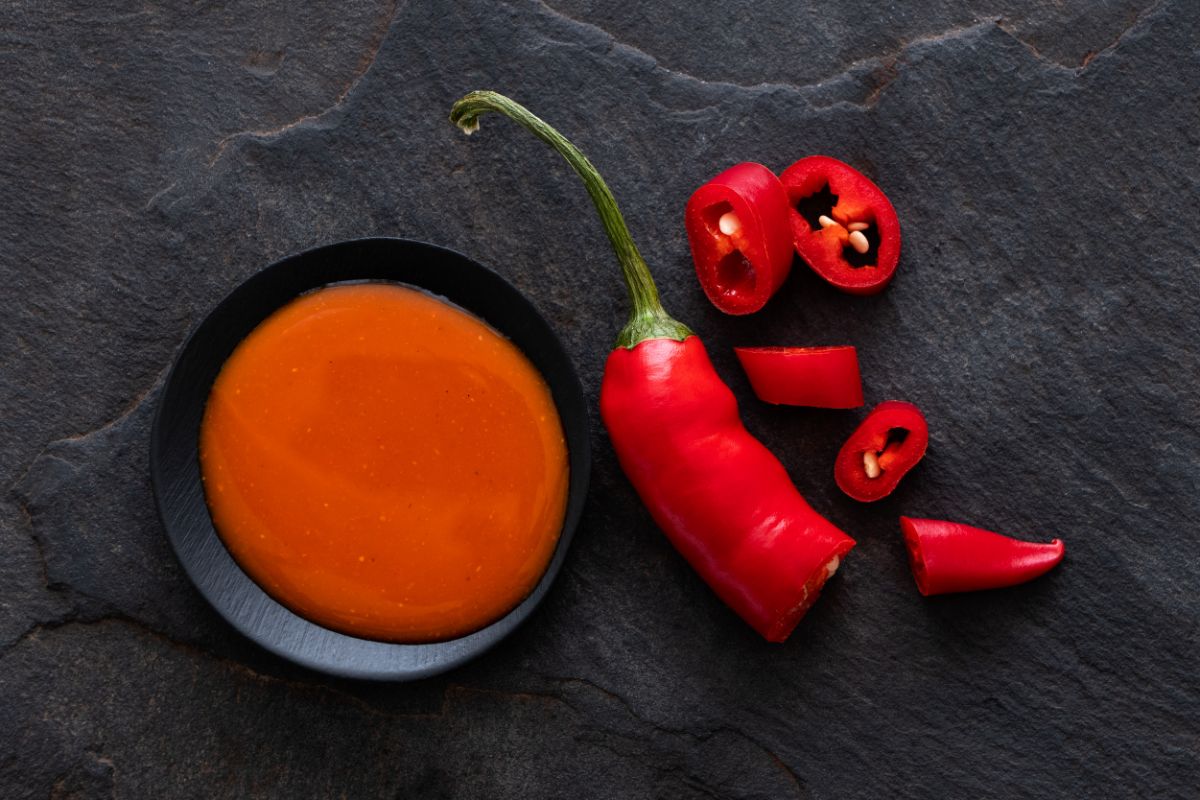
Also known as the African bird’s eye chili, the nickname is a bit of a misnomer as peri-peris originated in South America. However, they were introduced into Africa in the 15th century by Portuguese merchants and have been a popular extra hot pepper in African cuisine ever since.
Frequently used in dry rubs and bottled sauces, peri-peri has an elegance to it that’s more subtle than some of the other chilis on this list. While it has a heat that builds, it also provides smoky undertones and a delicate, peach-like flavor that is truly unique. Small peppers are about 1” long with smooth skin that turns red when fully ripe.
9. Thai Hot Pepper (50,000 to 100,000 Scoville Heat Units)
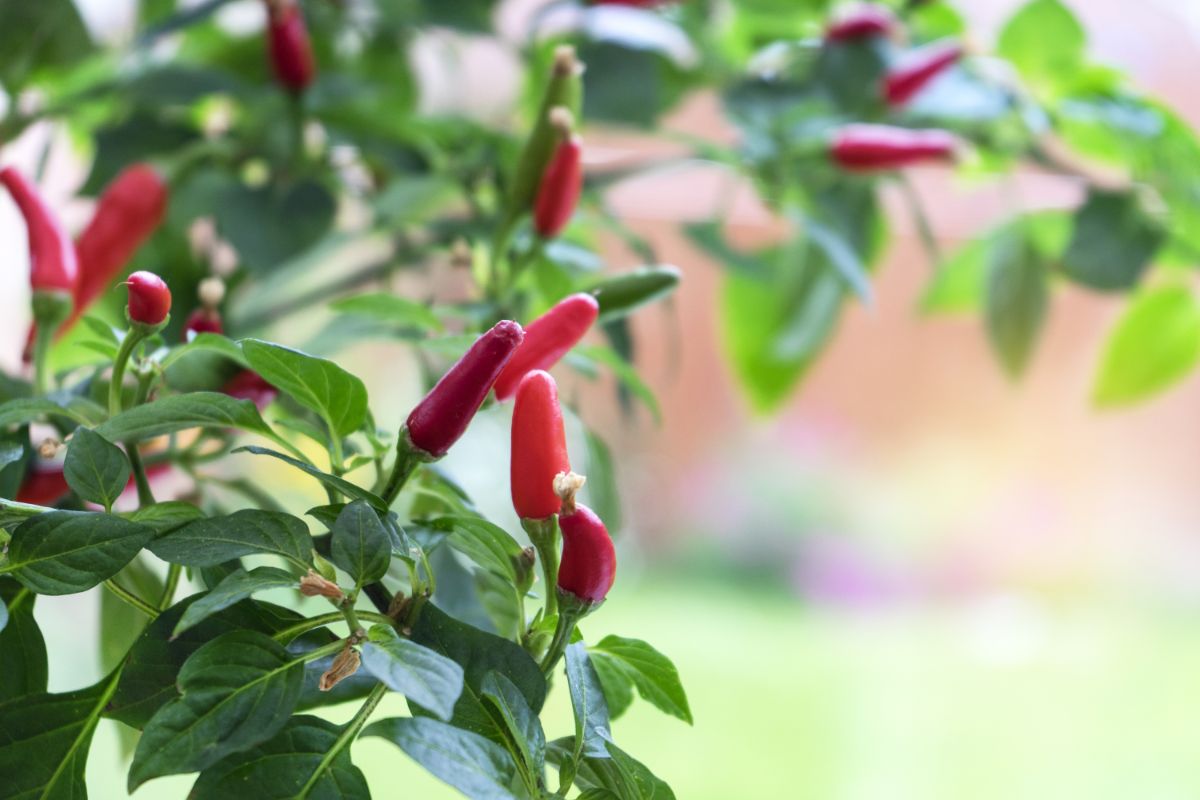
There are a number of different pepper varieties that can be labeled as Thai hot peppers, but all of them boast a good deal of heat and lots of flavor. These extra hot peppers are small and develop a rich redness when fully ripe, which is said, by some, to resemble a dragon’s claws.
If you choose to grow Thai hots, expect your plants to produce a large harvest. With all those tasty peppers in hand, you may want to consider dehydrating your pepper haul. Once dried, Thai hots can be ground down to create chili flakes and other spicy rubs and flavorings.
10. Malagueta Pepper (50,000 to 100,000 Scoville Heat Units)

Malagueta peppers are extra hot peppers that may not be as commonly known in certain parts of the world, but they are the peppers to grow if you love Brazilian and Portuguese fare. A staple in Brazilian cuisine, Malagueta peppers add lots of spice to stews and poultry dishes, but the peppers are versatile enough to use in tons of other recipes too.
Roughly twice as hot as cayennes, ripe Malaguetas have a similar appearance. The peppers are long, slender and tapering like thin fingertips and grow to about 2” in length. As Malaguetas can be difficult to find at the grocery store, they can be very fun to grow if you like trying new flavors.
11. Tabasco Pepper (30,000 to 50,000 Scoville Heat Units)
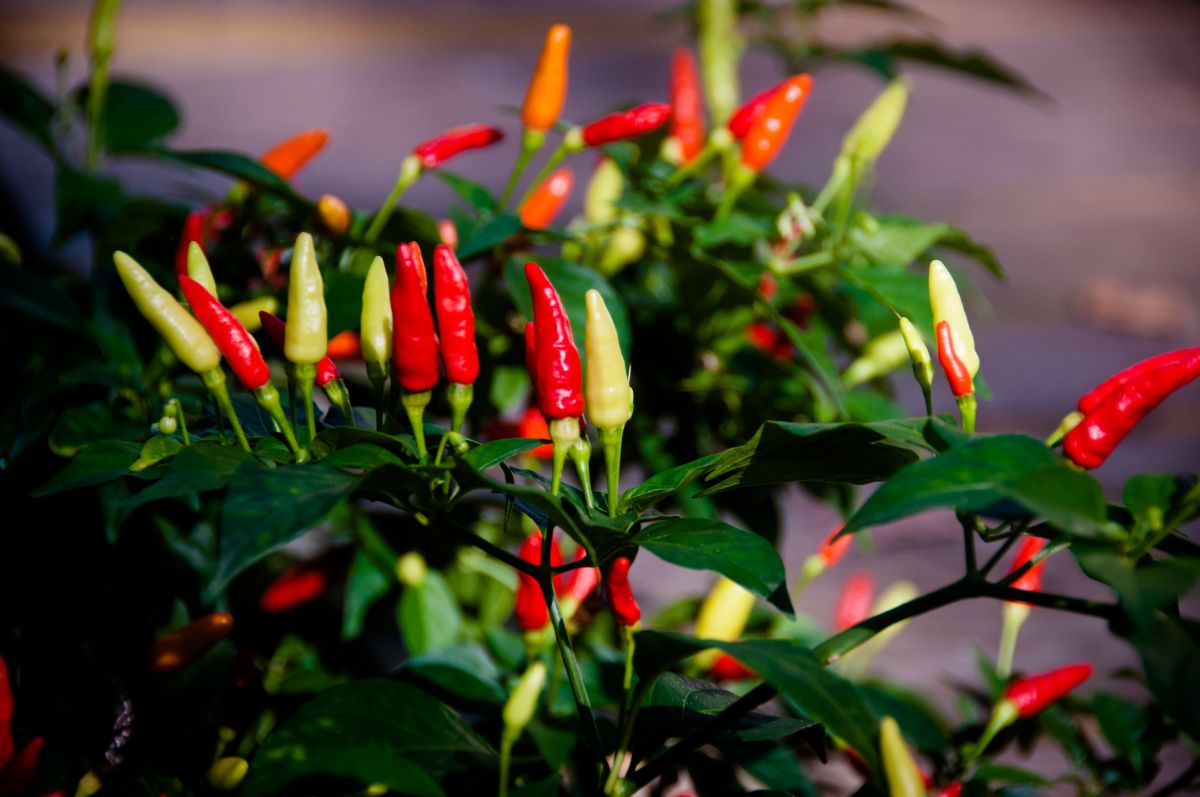
A name synonymous with hot sauce, Tabasco isn’t just one of the most popular hot sauces in the world… it’s also a pepper you can grow in your own backyard. Tabasco peppers are technically rated as medium heat, but they still pack a punch strong enough to enliven any dish.
Tabasco peppers have a relatively high moisture content and slight smokiness to them. That makes them ideal for homemade hot sauces, but they also dry well for seasoning blends. Just keep in mind that fresh, homegrown tabascos will be a lot hotter than the premade sauce, as the vinegar in Tabasco sauce cuts some of the pepper’s natural heat.
12. Cayenne Pepper (30,000 to 50,000 Scoville Heat Units)
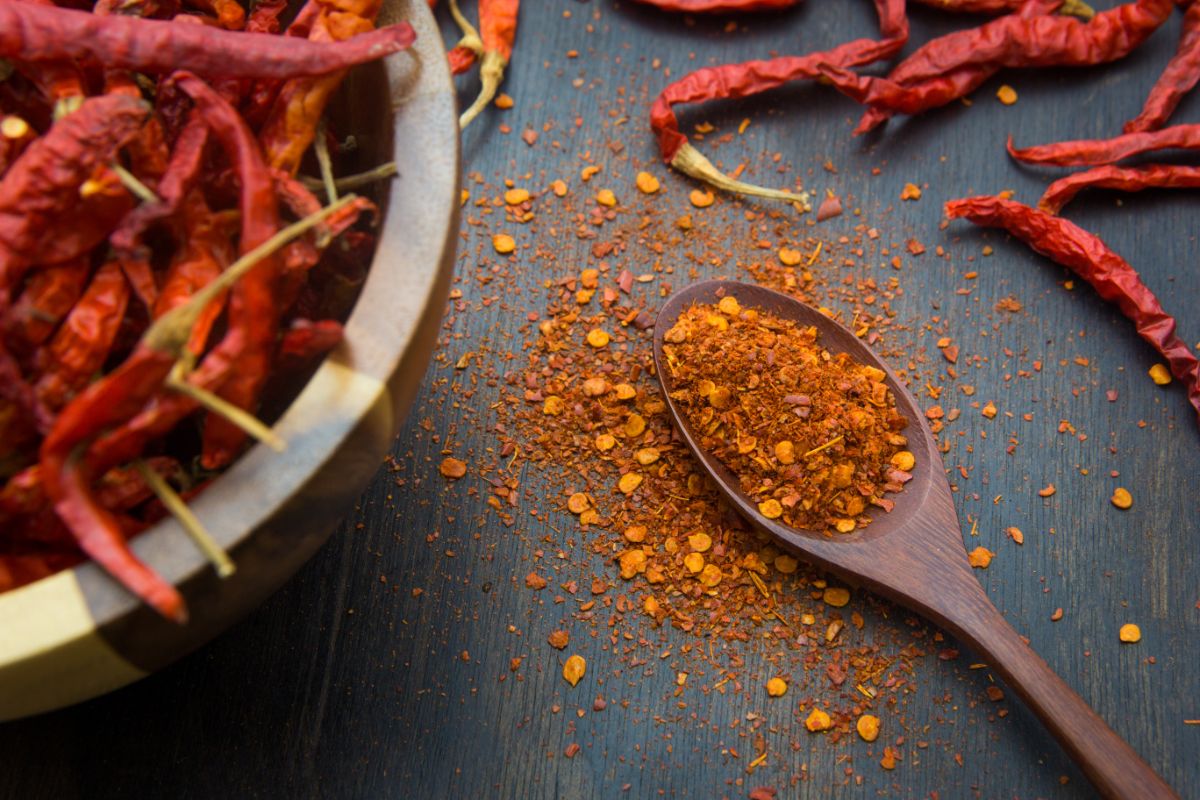
In most homes, cayennes are the hottest thing on the spice rack. Best known for its dried and powdered form, cayenne powder is frequently stirred into chilis and other dishes. But this versatile, medium hot pepper can be used fresh too.
Compared to other peppers on this list, cayenne peppers have a neutral pepper flavor and don’t taste all that distinct. Although that may sound like a detriment, home cooks love these peppers because they offer heat without much flavor to compete with other cooking ingredients. A larger pepper variety, cayennes are slim and tapering and measure up to 5” long.
13. Aji Amarillo (30,000 to 50,000 Scoville Heat Units)
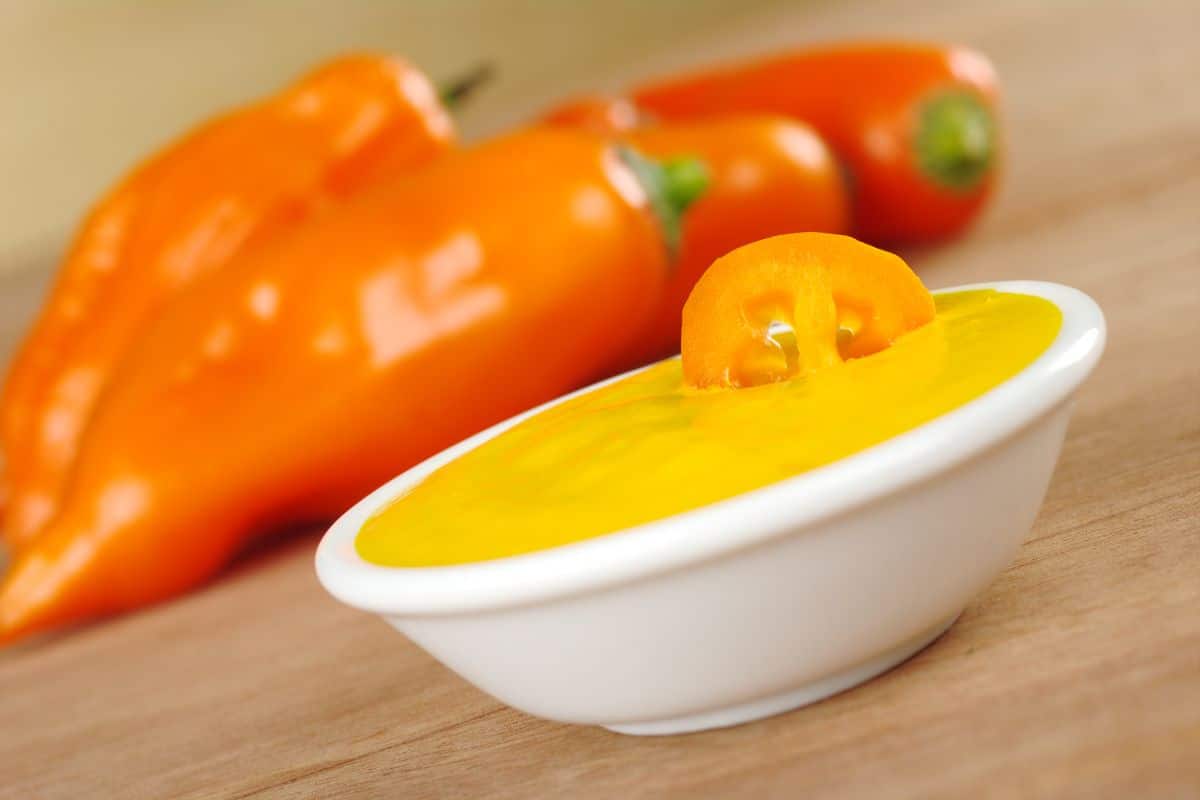
A staple ingredient in Peruvian cooking, Aji Amarillos can be harder to find outside of Peru, but they’re worth the hunt. These crisply textured peppers have a fruity flavor with a hint of raisin and medium heat levels. Ideal for sauce making, they are sometimes even used as salad toppers in Peruvian cuisine.
A pretty, golden-yellow pepper, Aji Amarillo fruit is slim and tapering and measures between 4 and 5” long. And, while it is classed as a medium hot pepper, don’t be fooled. They’re still up to 20 times hotter than most storebought jalapenos!
14. Lemon Drop Pepper (15,000 to 30,000 Scoville Heat Units)
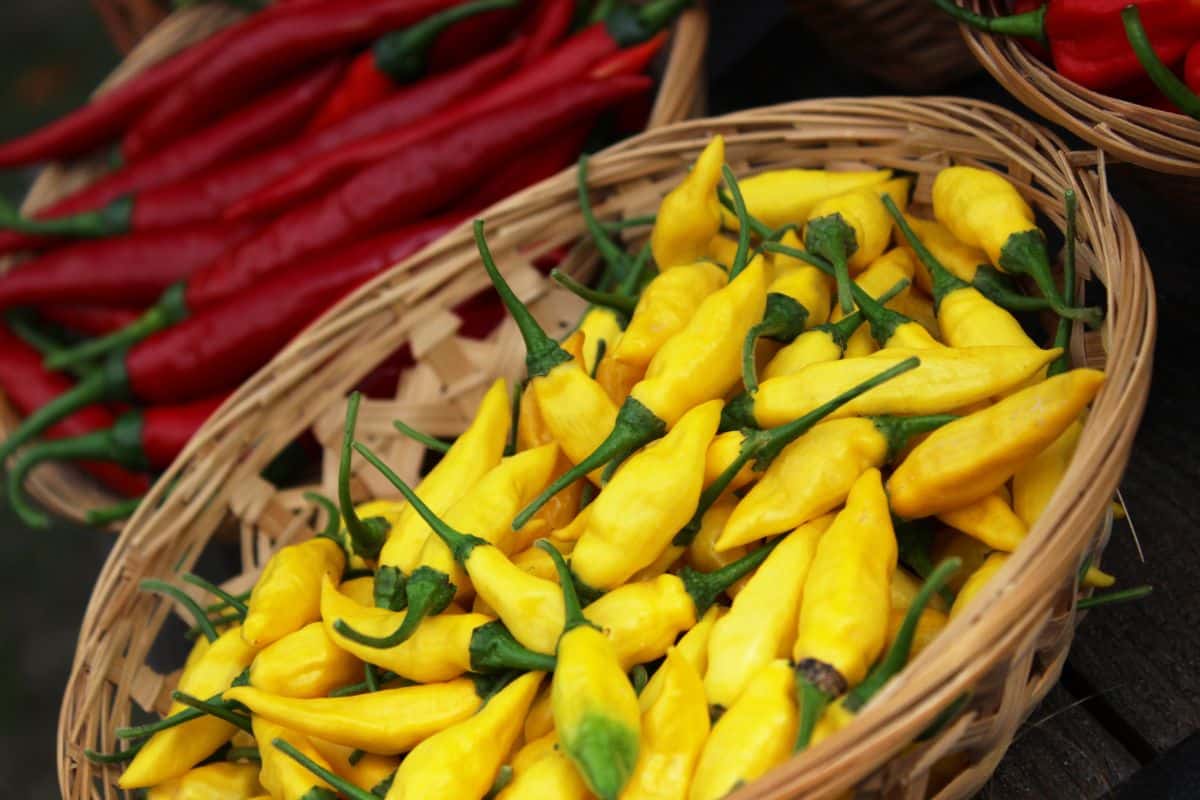
Another medium hot pepper native to Peru, lemon drop peppers can be hard to find. However, in recent years they’ve been gaining in popularity so more seed companies are carrying them.
Prized for their notable citrus flavors and zesty spice, lemon drops work well in homemade sauces and salsas. Thanks to the bright yellow fruit, these peppers are often kept as ornamentals too with moderately sized fruit growing up to 3” long.
15. Chile de Arbol (15,000 to 30,000 Scoville Heat Units)
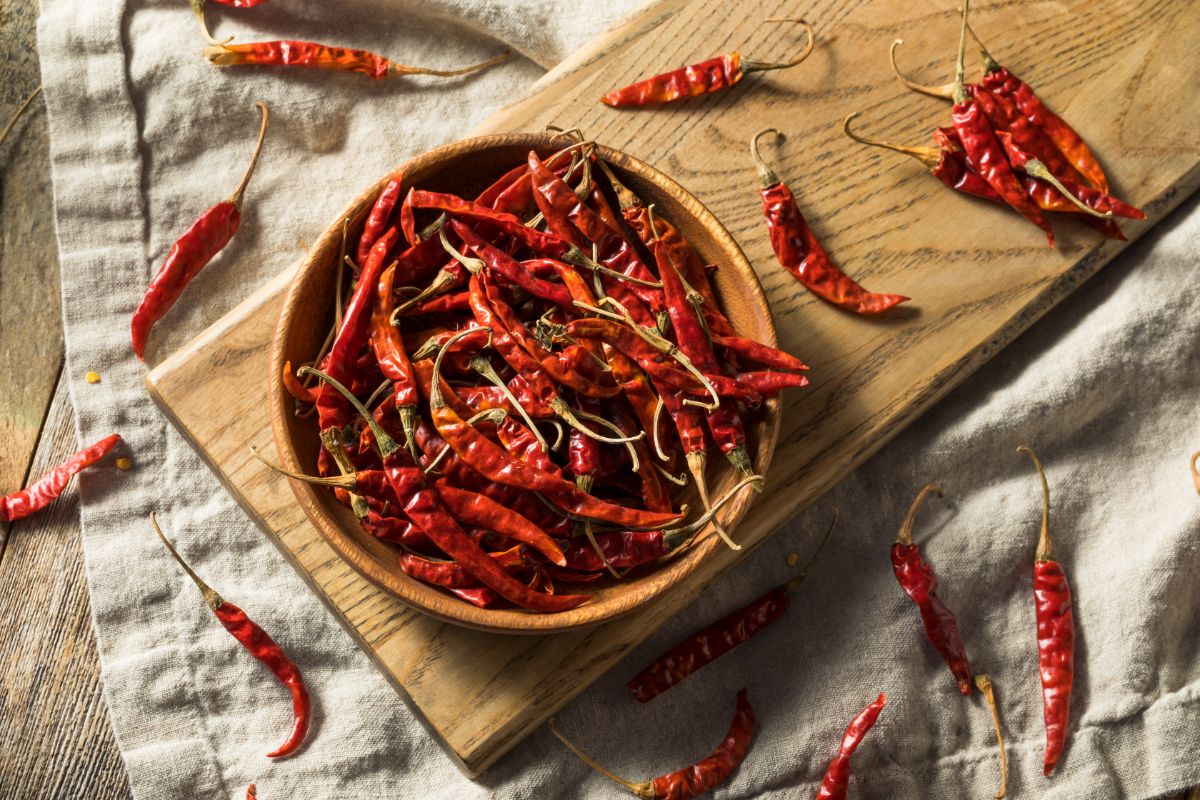
Also known as rat’s tail chiles, Chile de Arbol are closely related to cayenne peppers, with a medium amount of heat. A thin, 2 to 3” long chili, these peppers keep their bright red color even when dried. This makes them especially well suited for crafting homemade chili powders and other seasoning blends.
With a smoky and slightly nutty flavor, Chile de Arbol can also be steeped into cocktails or infused into oils and vinegars. To make your infusions, simply pop the entire dried chili pod into your liquid of choice and allow the chili’s heat to do the rest.
16. Serrano pepper (10,000 to 23,000 Scoville Heat Units)
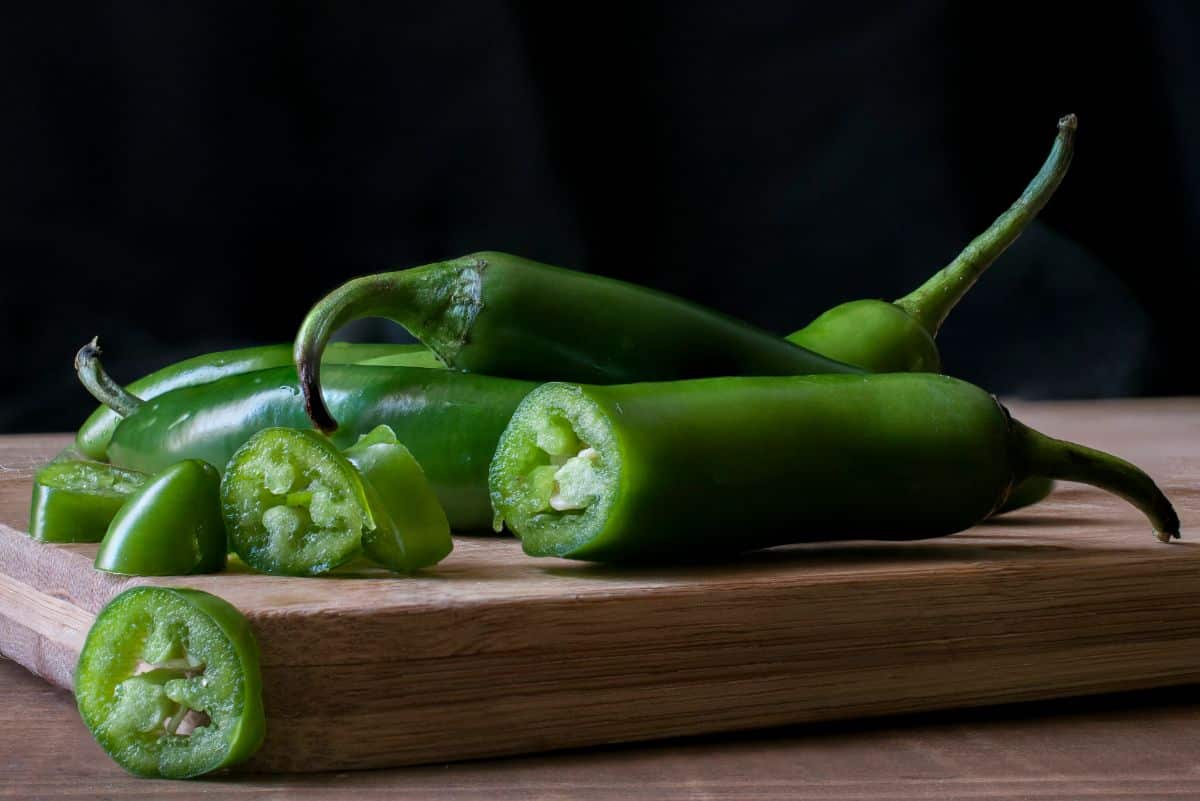
If you like jalapenos, but want a bit more heat, try out some Serrano peppers. These medium heat chilis have a slightly grassy flavor and can be used just about anywhere you’d use jalapenos. Eaten raw, they are perfect for slicing onto hamburgers, but they can be cooked or canned too.
Originally from Mexico, today, Serrano peppers are grown widely across Mexico and the United States. In the garden, they ripen in a similar fashion to jalapenos. Although they can be harvested when green, wait until they turn red for maximum heat.
17. Aleppo Pepper (10,000 Scoville Heat Units)
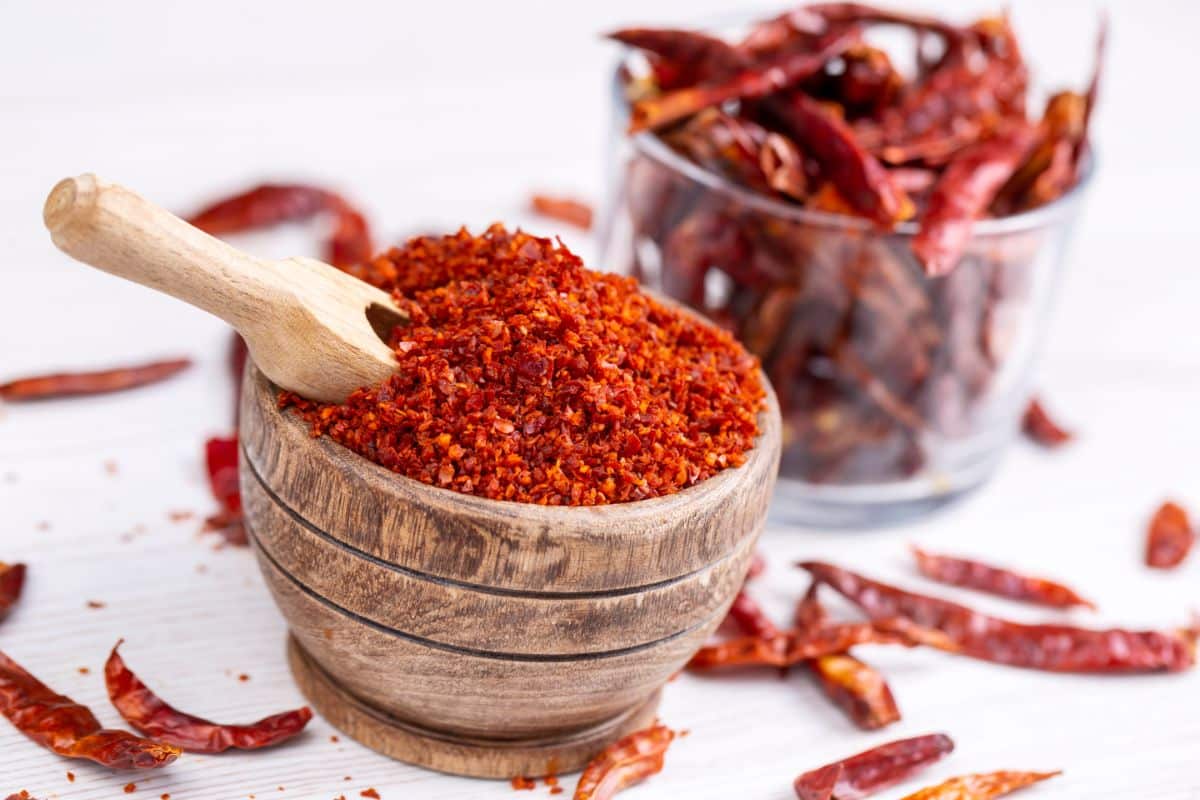
Aleppo peppers produce some of the best chili powders and red pepper flakes around. Beyond their medium heat levels, Aleppo chilis have a complex flavor profile, with a hint of salt, cumin and raisin. This distinct taste makes them the pepper of choice for Mediterranean fare, but they can complement pizzas, stews and meats too.
Named for Aleppo, a city in Syria, Aleppo peppers are particularly popular throughout Syria and Turkey, but the taste for them is spreading globally. Once mature, peppers grow to about 3” and have a slight curve to their shape.
18. Bulgarian Carrot Pepper (5,000 to 30,000 Scoville Heat Units)
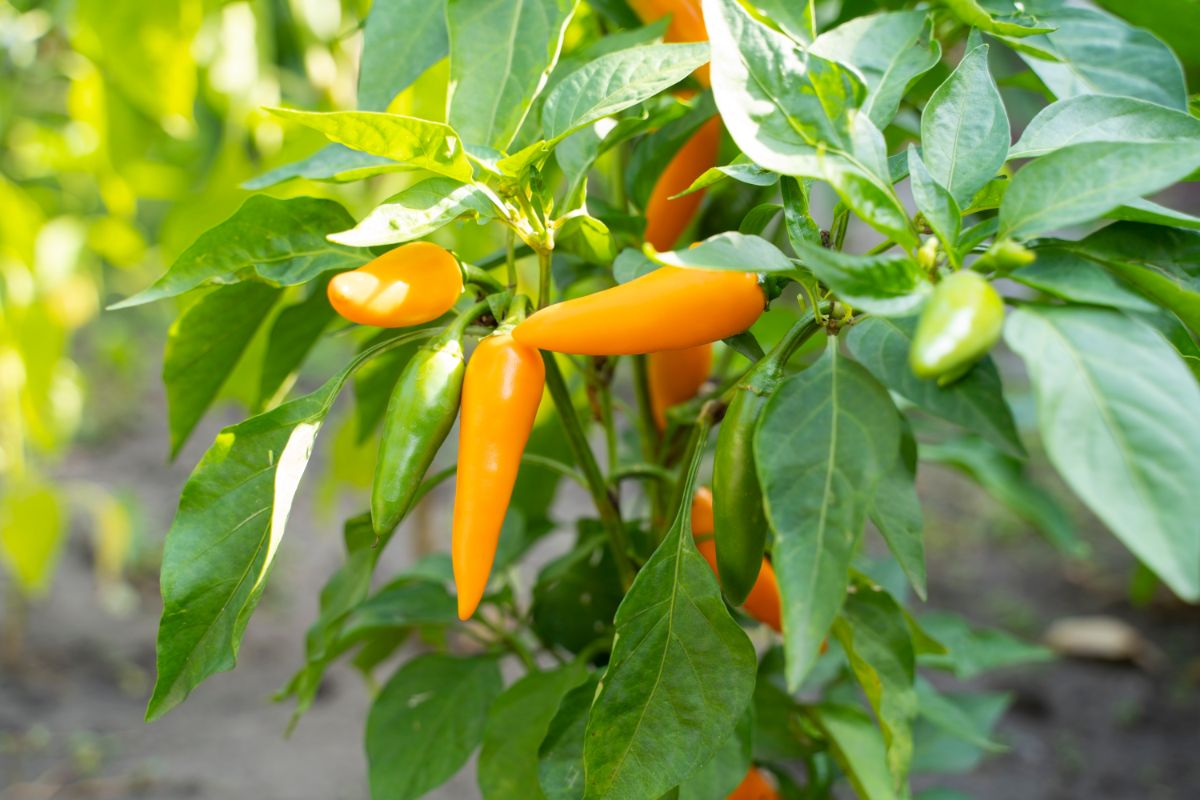
Bulgarian carrot peppers may look like carrots, but they don’t taste like them! These bright orange peppers are often grown as ornamentals thanks to their colorful skin, but they are tasty, medium hot chilis with just the right amount of heat. Great in homemade hot sauces, Bulgarian carrot peppers are crisper than most other chili types, which makes them ideal for roasting or pickling too.
Originally from Bulgaria, lore has it that these peppers were smuggled out of the area during the Cold War and their popularity has been spreading ever since. Once mature, Bulgarian carrot peppers reach about 3 to 4” in length.
19. Hungarian Wax Pepper (5,000 to 10,000 Scoville Heat Units)
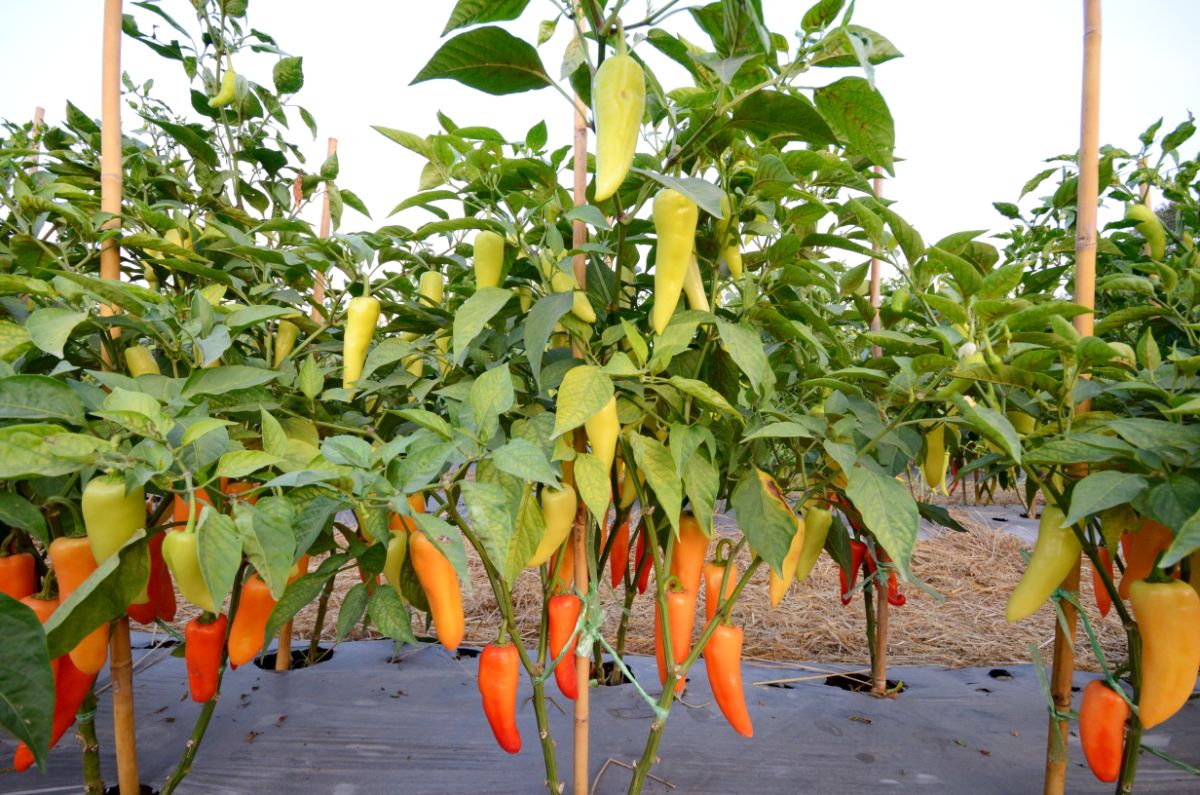
Hungarian wax peppers are often confused with banana peppers, but they are much hotter. More comparable in heat to jalapenos, these medium spice chilis work well for canning, but they can also be cooked up for entrees, like chili relleno, if you don’t mind the fiery flavor.
Beginning as a bright green pepper, Hungarian wax peppers will mature into a fully red fruit that is around 6” long. A perfect cooking pepper, Hungarian wax peppers are named for the fact that their skin has a slightly waxy feel to it. And, of course, they were first popularized in Hungary.
20. Jalapeno Pepper (2,500 to 8,000 Scoville Heat Units)
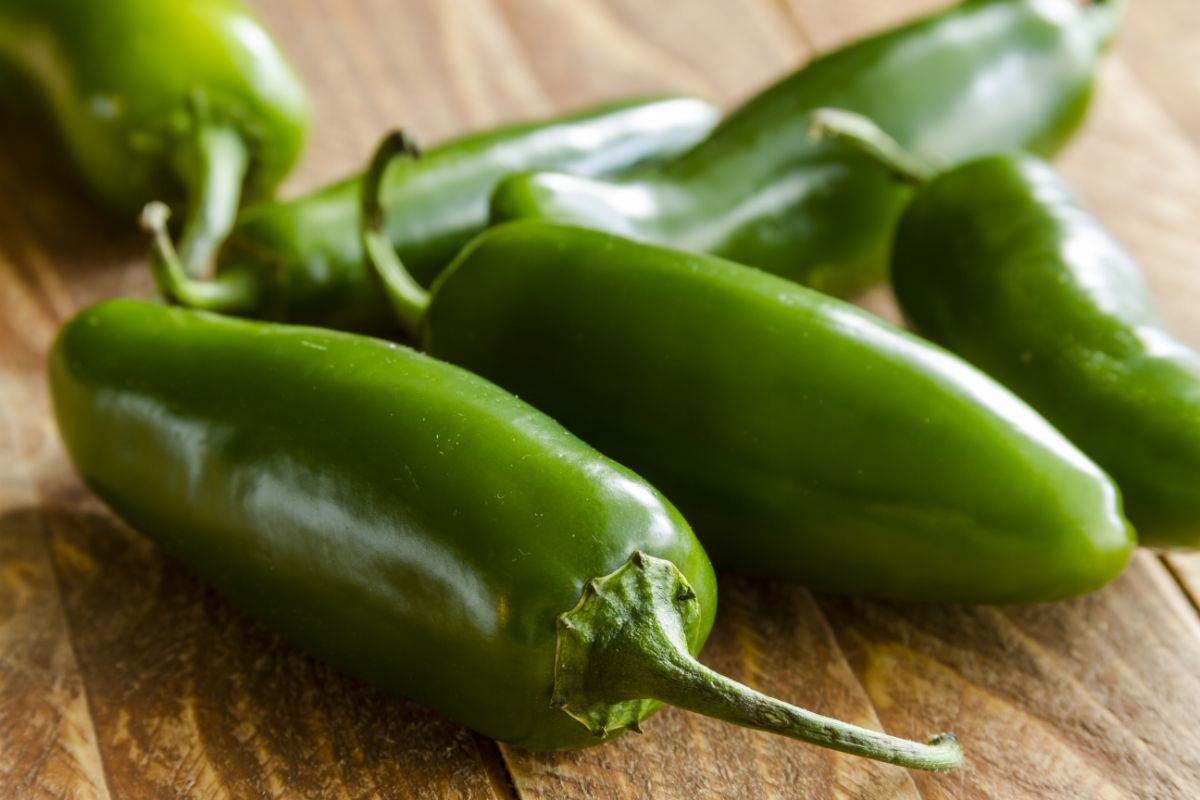
Then there’s the classic jalapeno. Although some may consider jalapenos to be too hot to handle, they are actually only classified as medium heat chilis. Regardless, they’re still certain to liven up any dish and they provide a nice tangy flavor too.
From stuffed jalapeno poppers to candied “cowboy candy,” jalapenos are a versatile pepper with so many uses. For hotter peppers, allow your jalapenos to fully ripen and develop a rich red color. Rough, brown markings on your pepper’s skin, also known as “corking,” is another sign that fruit is hot and ready to pick!
Frequently asked questions
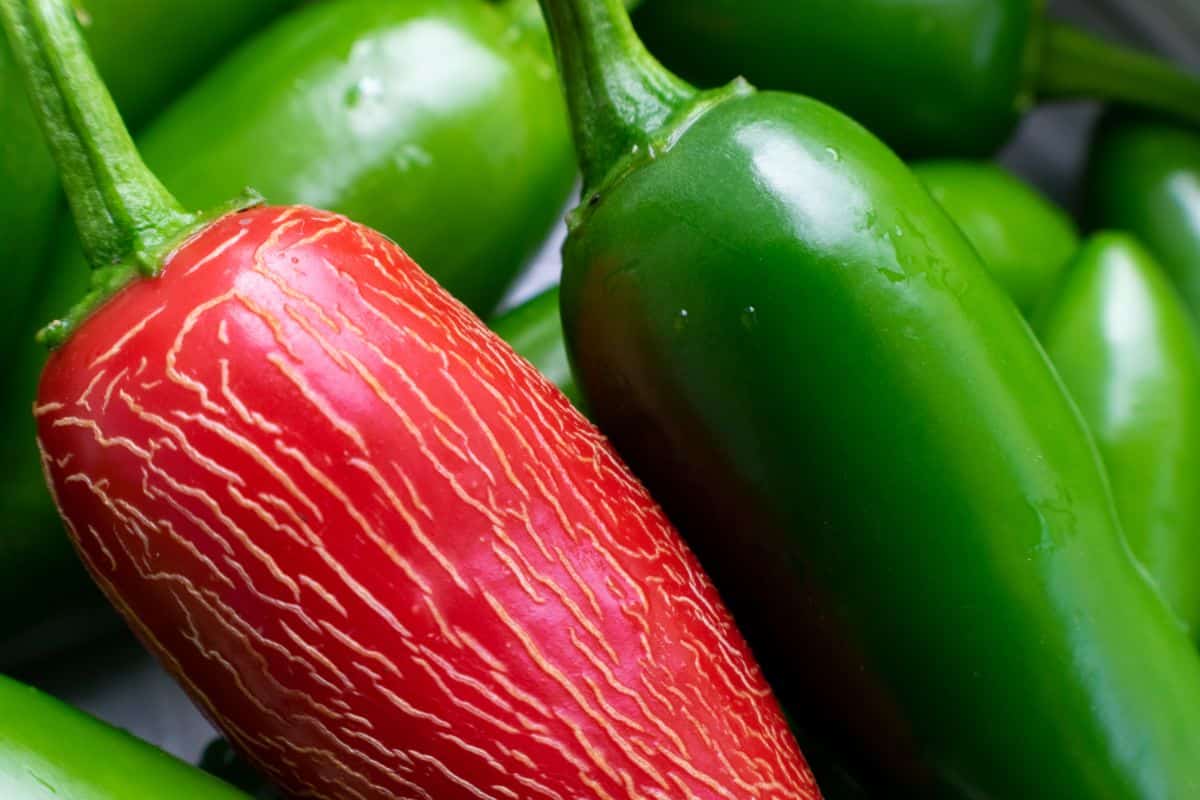
Currently, the Carolina reaper pepper is considered to be the hottest pepper in the world. Carolina reapers are over 100 times hotter than jalapenos with a spicy heat that can linger in your mouth for 20 minutes or more.
Dipping your hands in milk can counteract burning fingers, but you may have more luck with oil. Chilis’ heat comes from their oil, but as we all know, water and oil don’t mix. So, while you can’t wash the heat off with water, you may be able to scrub it away with some cooking oil.
Milk is widely known to be one of the best remedies to counteract too much spice. If your lips are burning from too much heat, try rubbing a bit of olive oil on them to cool your skin off.
Yes. The longer a pepper is able to mature, the hotter it will be. Although peppers can be harvested as soon as they reach a useable size, if you wait until they turn red, you’ll get more spice!
Summary
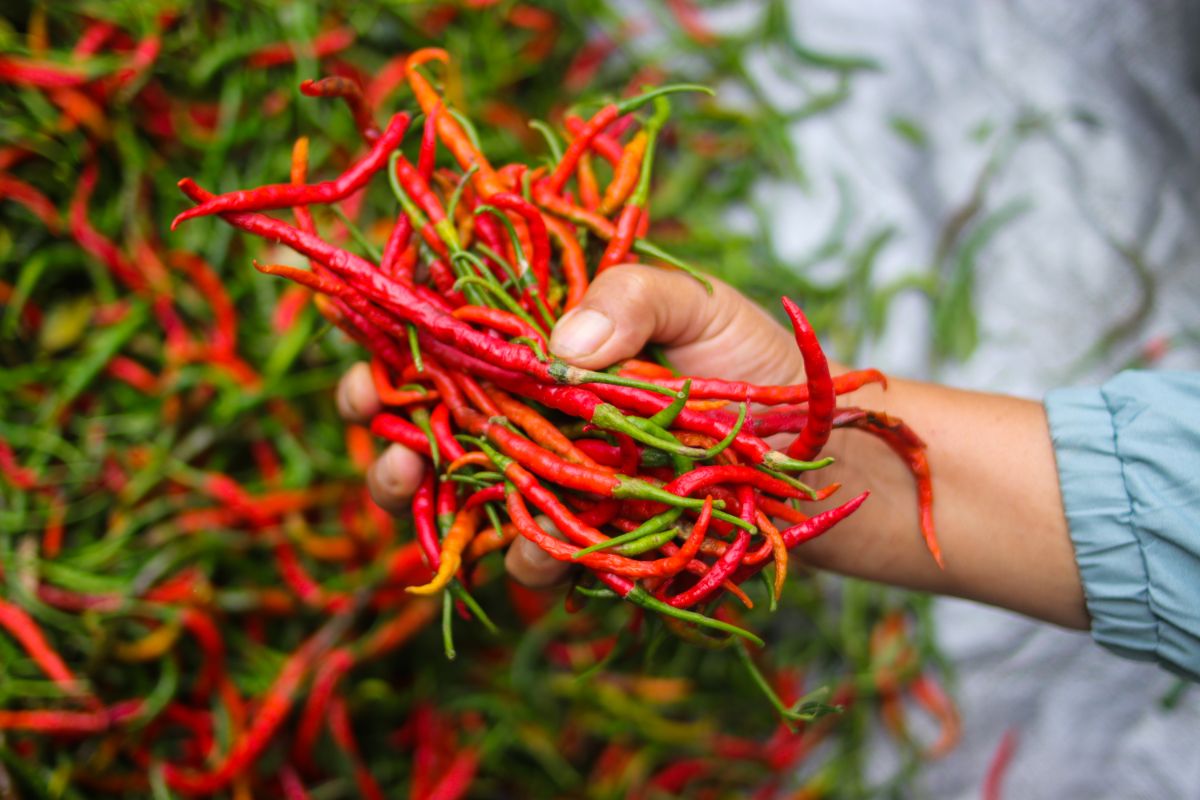
While mild banana peppers, pimentos and poblanos have their place, if you crave the heat, try planting something spicier. Today, thanks to the work of science and many industrious gardeners, there are lots of different fiery peppers to try in homemade hot sauces, spice blends and more.
Just remember, if you decide to cook with these scorchers, handle them with care and keep a glass of milk nearby. You may need it!
If you liked this article, check out our other content on edible veggies you can grow in your backyard here.

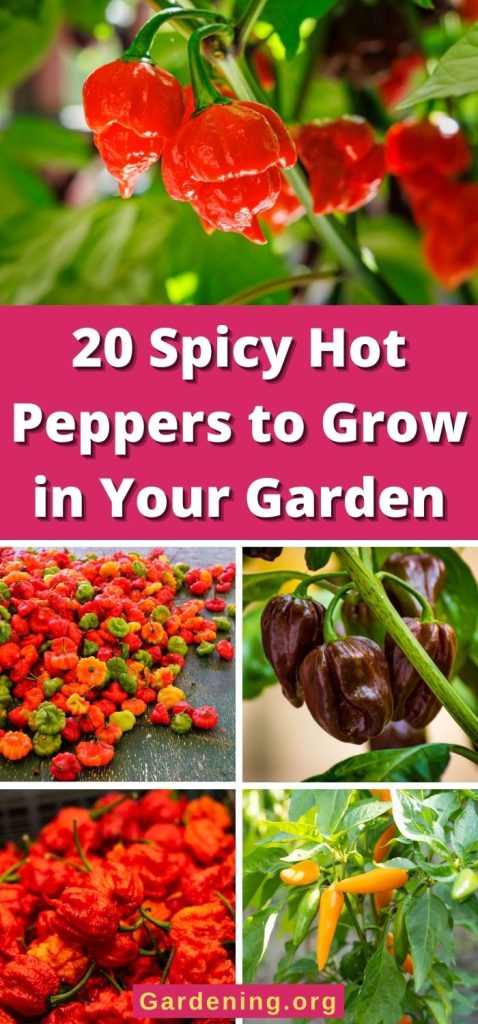
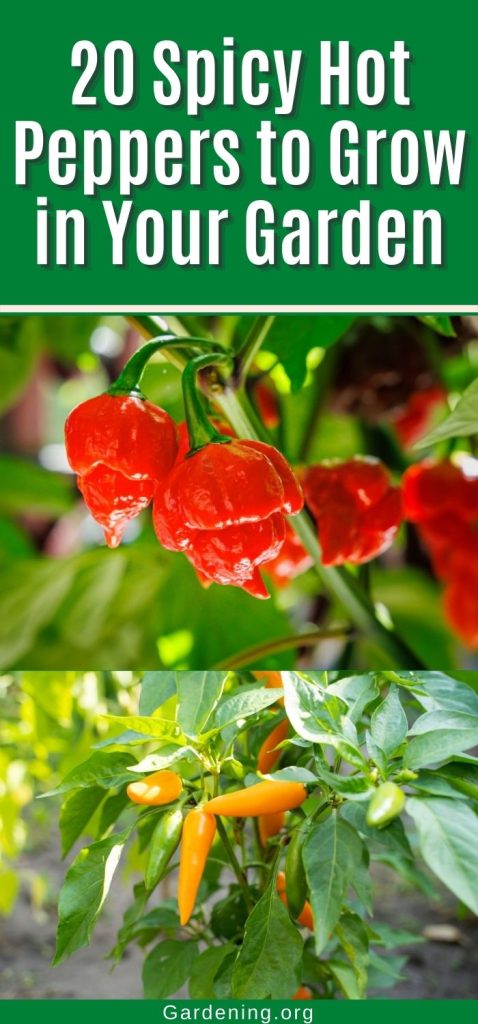
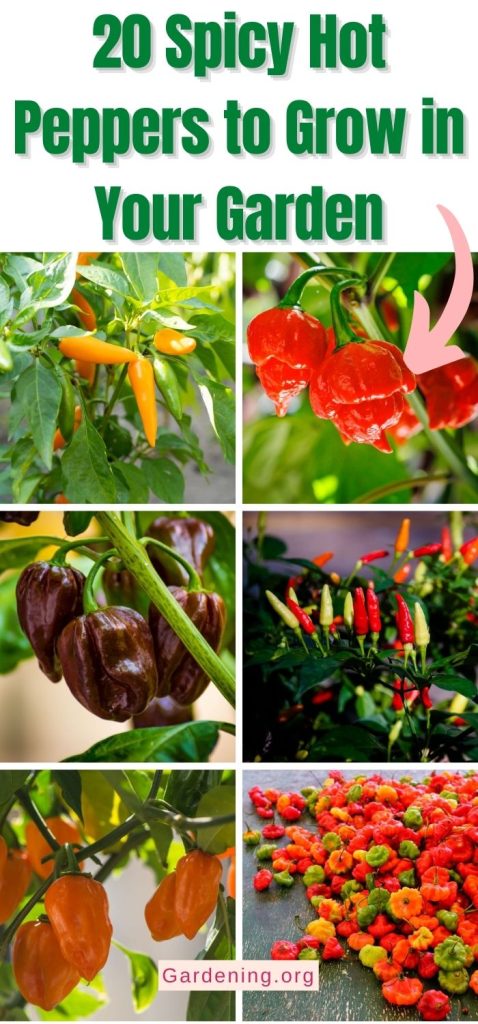
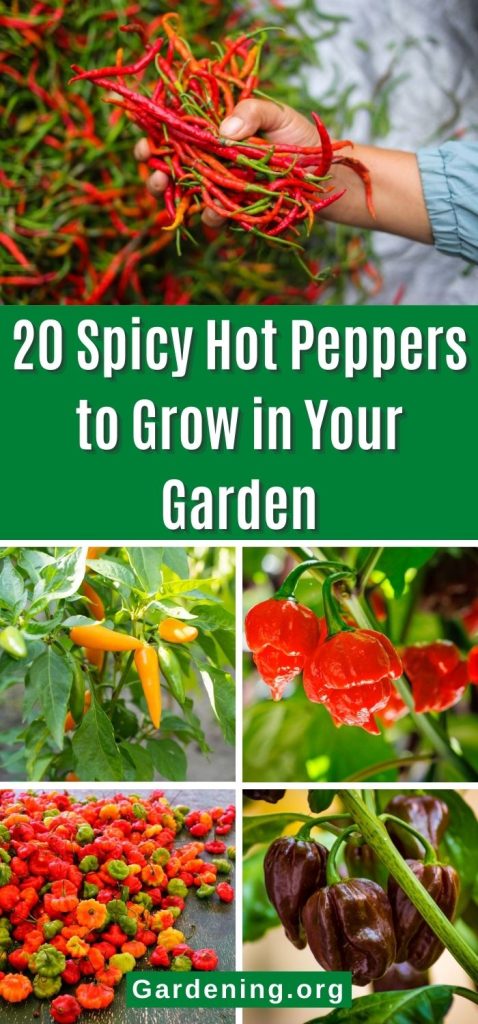
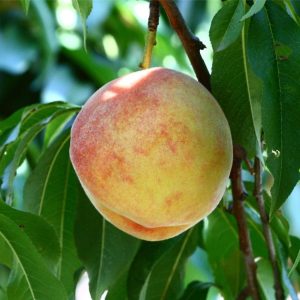
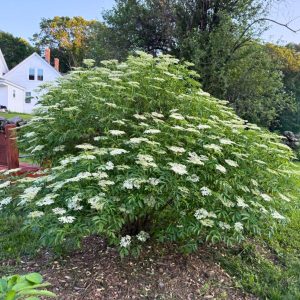


Leave a Reply